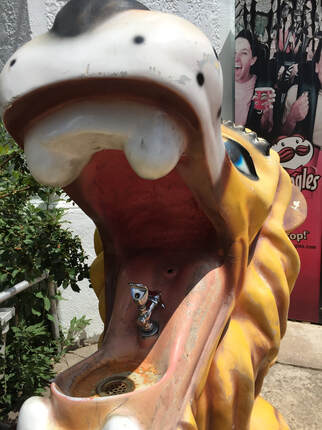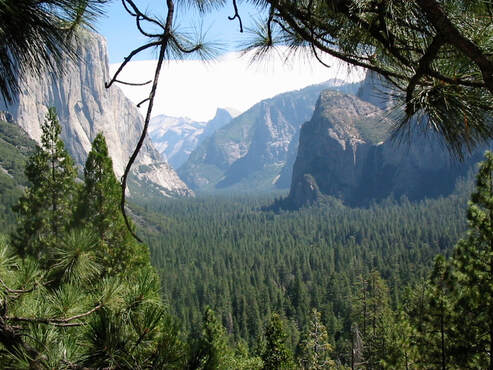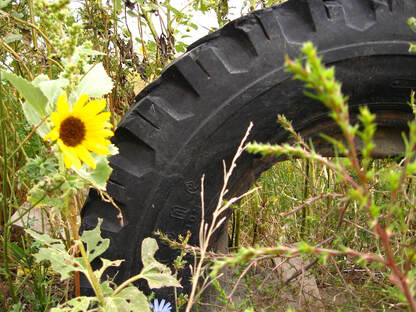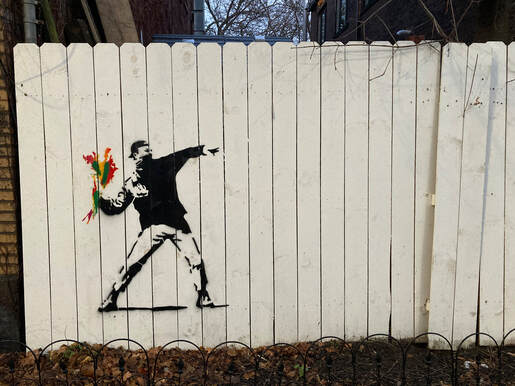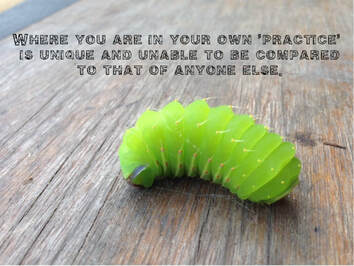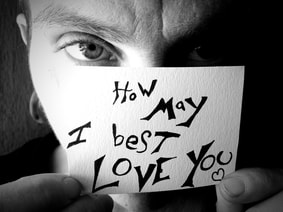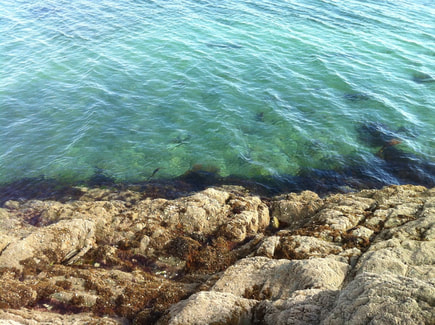|
Stress can mean different things to different people and each of us may have a different response to any given stimulus based on many factors. We know stress is personal and subjective and is one of the greatest influences over our health and well being. (A stressful situation — whether something environmental such as difficulties at work, or psychological, such as persistent worry about a loved one — can trigger a cascade of stress hormones that produces physiological changes.) We also know that there are tools that help us change our perception and reaction to stressful stimuli which then offers us more potential to shift any harmful impacts. This combination of reactions to stress is known as the “fight-or-flight” response because it evolved as a survival mechanism, enabling people to react quickly to life-threatening situations. The sequence of hormonal changes and physiological responses helps someone to fight the threat or flee to safety. This is a fantastic function of our nervous systems and certainly has times where it is needed. But as we know, the body can also react to stressors that are not life threatening (such as traffic jams, work pressure, and family difficulties). Our stress response these days is being activated in different ways than it was long ago and this is where it gets tricky. Over the years, researchers have learned not only how and why these stress responses occur, but have also gained insight into the long-term effects stress has on physical and psychological health. Over time, repeated activation of the stress response takes a toll on the body. Research suggests that prolonged stress contributes to high blood pressure, chronic illness, inflammation, heart disease, obesity, early onset aging, dementia and also contributes to anxiety, depression, and addiction. And these are just naming a few. We are continually realizing the ramifications of habitual or prolonged stress on our health. (And the key element to take note of here is the habitual and prolonged stress aspect.) To understand stress we need to realize our brain/body complex has evolved through time to meet our ever-changing environments and what ‘survival’ has meant. Our neural circuitry in the brain is designed to create ‘habits’ to make it easier for each of us to perform tasks without thinking. Each time you repeat a habit, whether a task, a perception, a thought, behavior or emotion, it becomes more ingrained and unconscious. The same is true of the habit of stress. Our stress and threat reactivity is partially shaped by our personal genetics and experiences but also by evolutionary biology. Believe it or not, our propensity to look for the ‘negative’ is a human trait we carry over from our early ancestors. The brain keeps us closely tuned in to what is ‘bad’ or potentially harmful in our lives to ensure our survival. The brain is a critical hub on every level in our quest to survive. Without you realizing it, in the course of just one breath cycle, a quadrillion-plus messages and signals will cross your brain in roughly a tenth of a second. All our thinking, emotions, desires, bodily functions are courtesy of close to a trillion brain cells as they fire in our brains sending messages to other neurons. Basically the brain is a connection machine constantly moving information around. Research is beginning to show us that a lot of this brain activity has been dedicated in service to negative thoughts rather than positive. The reason for this can be found in our ancestry and the need to survive. We needed our brains to constantly scan our surroundings for possible threats and if you weren’t diligent, you might not survive. Technology has allowed us to actually see the functions of different parts of the brain and the roles they play. The amygdala (our alarm center) has two thirds of its cells dedicated to processing negative or potentially negative information. This part of the brain dates back to our reptilian predecessors and is often called the ‘lizard brain’. It differs from the prefrontal cortex that helps us stop, think and evaluate situations. The prefrontal cortex takes its time to evaluate data and make decisions. The amygdala scans moment to moment and makes fast snap judgments based on what is perceived as a threat. It has been ‘hardwired’ to focus on the negative and quickly react. Basically our brains categorize memories we have experienced as bad, threatening or unsafe and the amygdala stores them to be retrieved the next time a similar situation arises. This is a mechanism for keeping us safe. Every day we are faced with trying to balance our brains' deeply ingrained evolutionary tendency to survive and see ‘threats’. This primal reaction is then intensified by our own unique life experiences and the increased frequency of perceived threats. Thousands of years ago a ‘threat’ was a wild animal or finding food daily when you had to forge for it. And while our modern times still have threats to our basic physical survival, we have also developed stress responses to everyday thoughts and emotions when it comes to jobs, social dynamics or relationships. In our daily lives, some of us find our stress response being activated continuously throughout the day and we are less able to regulate and relax. And to top it all off, our biology does not differentiate between a physical threat and a thought or an imagined threat. This amazing stress response and biological system is so effective and serves to keep us safe. And it is essential that we learn to adjust and adapt the information we are sending to it so it can best support us and not constantly activate or charge into overdrive. We do this by engaging our awareness and bringing light to some of our unconscious habits, thoughts and emotions we have. And ur prefrontal cortex is a great ally for doing this. The Potential We know that we have this amazing biology that has evolved over thousands of years. Our stress response is a part of our design and took shape due to very real needs for survival. And we know our brain and biology is ever evolving over time to adapt to our environment and needs. There is incredible research speaking to these adaptations and specifically to how our brain has grown and made significant changes. For the purpose of our focus here, I am going to bring attention to the part of the brain known as the the prefrontal cortex or PFC. The PFC is an area of the frontal lobe which is one of the lobes that makes up our cerebral cortex. (The cerebral cortex is the outer layer of the brain and is amazingly responsible for higher level processes such as thought, language, reasoning, memory and more.) The PFC is an area at the very front of the frontal lobe and is responsible for ‘higher cognitive function’ such as decision making, emotional regulation, imagination, self control and problem solving. The PFC has been shown to be activated when an experience becomes ‘conscious’ and that ideas and perceptions intertwine in this area and help to create conscious experience. The PFC, like many aspects of our human biology, is very complex. The overview above is basic but I share it to highlight the important elements about this amazing area of the brain. And the exciting piece for me is that studies have shown that the PFC has increased in size over time (along with the overall size of the brain). What this tells me is that yes, we have these much older areas (like the amygdala and aspects of our stress response) and a brain that is wired for survival (as we discussed above) BUT, the PFC has been developing and growing to support our evolution towards making different choices, discernment, conscious regulation, using our imagination to support a balanced stress response and so much more. We have the wisdom and information to engage and develop our PFC more and more to redesign our stress response, our thoughts, our emotions, our perceptions and beyond. Our stress response is there to support us but first we have to develop our tools and practice our skills to retrain it to function more sustainably for our daily lives. AND the great news is that our brains and bodies are designed for change. They are set up for us to engage them and train them in ways that are more and more supportive for us. Sound Body Wisdom supports this change and engagement with proven tools and skills by helping you develop a practice to consciously interact with your PFC. You learn to relieve stress and improve overall health by understanding your habits when it comes to thoughts and emotions. You will discover the power of the many available tools and skills to interact in a balanced way with your mind body complex and have more resources for making the changes you want for yourself. We are more powerful than we realize!
0 Comments
I am contemplating ‘comfort’ and pondering the many ways it may or may not influence our choices and behaviors.
How does each of us create and move towards or away from comfort in our lives? What role, if any, does predictability/the familiar play in this? To what lengths will we go to maintain and sustain our ideas of comfort? That last question in particular really feels significant to me. I find myself so curious about what comfort means to us and the effect each of our own personal choices for comfort has on one another and the world…..the simultaneous blessing and challenge of it. Comfort and creating patterns of predictability in our lives can be a way to create security perhaps especially in times when we feel a lack of it. This can take many shapes but some of the more obvious ways we design it is through the work we choose, the friends we keep, choices we sustain or emotional reactions and scenarios we play out. (We can also see within groups of people and communities how they seek to maintain the familiar and levels of comfort…..sometimes at the expense of others) I think we have developed many different ways of how we relate to and design comfort for ourselves and it is truly a vast and nuanced realm. I feel our human condition strives for comfort and quite often we have found and maintained through more easily accessible and perhaps culturally conditioned patterns. We choose the familiar on many levels even when it might not nourish us on the whole. Along with this, I also believe our concepts of comfort are deeply informed by societal ‘norms’ and status quo in ways that are both obvious and imperceptible. In what ways do you maintain your own level of comfort? Can you notice any ways that your ideas are shaped by society and social environment? Comfort and the familiar somehow allow us to feel safe and offer stability (think of the phrase ‘going outside your comfort zone”). The flipside of this I find interesting…..it is the place of feeling discomfort or insecurity and it is not a place we like to linger. We generally find ways to move away from these experiences, sometimes by extreme measures and many times by maintaining patterns of familiar and predictable behaviors. Again, even when they might not nourish the whole. (And sincerely I am always amazed at how resourceful and brilliant we each are in our ability to create a sense of safety and ‘survival’ through different techniques both conscious and unconscious.) Generally speaking, I don’t see people consciously seeking out and moving eagerly towards ideas, emotions or places that might bring their world into question or put them in a place of discomfort. This makes sense as I think there can be a certain amount of fear that accompanies change. We like to rest assured that some things are ‘matter of fact’ and cannot be questioned. We count on these things as our foundation to build upon since we believe our foundation needs to be unshakeable. We learn that change, permeability and sometimes not having any answers are not typically desirable qualities of basic human security and comfort. These things are not synonymous with comfort. But life and being human is truly filled with mystery and discomfort ……by nature they are inseparable. And to be honest I think we have given ‘discomfort’ a bad reputation, perhaps overlooking the potential within it if we can meet it with curiosity and openness.We will all have times in our lives where we find ourselves in uncomfortable circumstances of upheaval or change without knowingly inviting any of it. Sometimes these are small blips on the radar and we can push through by holding steadfast to our patterns…..but other times they really wallop us and cast us into deep waters. During these more oceanic events, each of us will have our own unique experience. But the journey will likely include variations of trying to stay above water, finding familiar shores and returning to our pre-existing ideas of comfort. Have you ever experienced something like this? Can you relate this to different times in your own life? How did you meet these events and where did the journey take you? I know what it was like for myself during the most potent time of upheaval in my life many years ago. I felt like I was drowning and I would have grabbed at anything to stay above water and hold on to my designed concepts of safety and comfort……ideas of ‘me’ and life. But circumstances (and my unconscious self) conspired to challenge me on every level. I fought hard for my constructed ideals and at a certain point I realized I needed to try something radical. I had to surrender to the unknown. I had to stop clinging and allow something truly new to emerge. At first I was afraid of drowning….but the surrender that came gave permission to let the waters transform me and to make ‘peace’ with the unknown. The darkness of this unknown felt like ‘death’ but sometimes that darkness or what might feel like a ‘death’ is simply some part of us changing or evolving…..shifting. (And just to be honest……while I was in this process it was unbelievably uncomfortable and not easy by any means. But through practice and time it has gotten easier to be with discomfort and the inevitability of accepting the unfamiliar.) Those shifts are not always comfortable and quite often we are eager to get out of this sensation and jump to the next landmass or stable concept of self and life. We very quickly construct a new familiar and fill it with answers more often than questions. We sidestep the ‘void’ or mystery in our intricate map of creating ‘safety’ and avoiding vulnerability. I know that if my circumstances hadn’t been a ‘perfect storm’ I would have gladly sidestepped and played it ‘safe’……probably not even gotten my toes wet. I would have totally chosen ‘comfort’ and the familiar…… ………and I would be living a perfectly lovely life right now……just a different one. But there was no choosing at the time as I was thrown into the middle of an ocean with no land in sight. So here I am now and what unfolded for me was a new relationship to mystery and the unknown…..a personal landscape of questioning and being present with both elements of comfort and discomfort equally. Which is what brings me to wonder……what would happen if each of us chose not to avoid discomfort or feelings of insecurity? What would happen if we chose to move towards our fear and simply be with our discomfort and the unknown? What if we moved towards vulnerability? Well, it would simply be a different way of living our lives……not better or worse….. but different. In many ways it is easier to continue with what you already know……to create and maintain comfort and a sense of security through holding on to what is familiar. We are quite skilled at distracting ourselves just enough to avoid addressing things that question the familiar and perhaps invite discomfort, insecurity or vulnerability The interesting thing in taking this route is that we cannot deny the ever-changing nature of the world around us and the evolving nature of the self. When we try to maintain and stay attached, not allowing space for change, this resistance can create a tension that ironically generates more discomfort even though we were trying to avoid it. So I have become curious as to how we might create core comfort……the comfort of being You in the world (and in your own skin), a relationship to the unknown and having a sense of fundamental security within yourself. This is a comfort and security that is not based on anything tangible since we know that all things change and are permeable. This different form of ‘comfort’ might actually allow us to simultaneously be with discomfort and the unfamiliar as we realize they too have something to offer us. Questions and curiosities….. In what ways do you notice you might avoid discomfort? What would be some practical ways to move towards discomfort or invite change or the unfamiliar as a path of nourishing yourself? Perhaps a place to start is to gently take a look at some of the ways we create comfort and security in our daily lives as a means for avoiding change and vulnerability. Can you meet these with curiosity and non-judgment? Whatever the circumstance or unique quality of you, how does this self -awareness and un-conditioned love offer even more possibilities in this amazing journey of the self? Hello all and hope you are well!
Today I wanted to look at the art and challenge of self-acceptance; the practice of accepting ourselves with all of our unique foibles, idiosyncrasies and less than shiny bits. (No ifs, ands or buts.) This practice is so essential because it fundamentally informs the way we perceive the world, others and our own self. And our perceptions create our ‘reality’……or at least how we feel about it and choices we make. My question to you is this: When you think of yourself and look at the complete/everything included version, do you allow all your different parts to show themselves or are there some parts you consistently keep hidden away? (Hidden except for when they manage to act out or until you can tuck them back out of sight.) Are there parts of your self you don’t show due to shame, embarrassment or simply feel they are ‘unacceptable’? Are there parts of yourself you don’t like? This is interesting territory to look into because it is a natural human response to avoid things we don’t like or enjoy. It seems quite ‘normal’ to ignore those less than savory parts or tuck them outside of the light of who we (want to) see ourselves to be. (And many of us have our parts that we might struggle with….) The truth is, I have yet to discover a way of fully seeing, loving or accepting oneself that might include a severing or rejection of certain parts of our selves for any reason. With this in mind, if we are participating in any form of blacklisting or diminishing of certain parts, I don’t see how we will be able to fully enjoy the nourishment of self-acceptance and authentic self-love. (Again, when I say ‘authentic self-love’ or acceptance I am speaking of the kind where there are no caveats or strings attached. It is a state of being without an ‘if’ or ‘but’.) It can be quite a puzzle because what we have generally learned is to only acknowledge or truly show the parts that we like or are ‘acceptable’. And since this is status quo, it seems like this behavior is a no brainer, right? But what if… What if the key to consistent and grounded self –love/acceptance is actually about gathering together all parts of us? Even if we don’t like them, what if we choose to invite them in and accept them as is? What if we gave these parts caring face time (and not just when they are ‘acting out’ or causing a ruckus inside of us)? Here’s what I know; each of us have these parts that we might want to reject or hide, even from ourselves. And each of our reasons and relationships with these parts are unique to our own lives. That is why there will always be a unique approach we each need to discover for ourselves. But I fully believe each of us can discover this approach and a deeper sense of self-acceptance without question. These parts that we try to ignore always find ways to speak up and get out from under wherever we have ‘hidden’ them. This internal dynamic creates a tension and even a setup for pitfalls. It can support a system of continuous push/pull that leads to a sense of internal struggle, depression or self-deprecation (to name a few). It can also fuel dynamics you perpetuate in your external relationships with others. These inner dynamics can cause replicated behaviors of rejecting others, reacting as opposed to communicating or favoring only that which is simple/pleasant. (I am sure each of us can connect the dots along these lines somewhere in our own lives) Learning to recognize how we shut out or snub certain parts of ourselves and then choosing to integrate them back into the ‘whole’ can actually free up energy we are exerting to keep them ‘out’ or hidden. This acceptance and integration that we can cultivate is a tool that benefits not only ourselves but also our interactions and relationships with others. It can bring a sense of calm, empowerment and renewed energy within us that has a domino effect throughout our lives. Learning to “ride the bike” I realize that this is generally easier said than done and I don’t offer any of these suggestions lightly. For me, the practice of the self is one that requires attention, patience and a whole lotta kindness. The metaphor of riding a bike works pretty well here and all the qualities of: focus, consistent practice, encouragement, repetition, willingness, effort and…. falling over. When we first learned to ride a bike we might have gotten frustrated, had a bit of a cry, felt scared or even fallen but somewhere in the process we simply needed to take a breath, trust and try again. We didn’t typically accept that falling over was all there was to it and stop there. Accepting and loving our selves without question is similar in this way. First we need to recognize there is something beyond our conditioned patterns to move towards. To a certain degree I am not even sure we are aware of this ‘self -practice’ that can help cultivate an all round more pleasant ride in our lives. Many of us have reached the point where we can at least function on autopilot so why fix something ‘if it ain’t broken’. It’s as if we don’t realize we can cruise smoothly on our bikes and tend to think that constantly falling over every few feet is as good as it gets. But imagine the difference if falling became more infrequent and you could actually enjoy sailing downhill with your feet on the handlebars. Suddenly even the challenges of hills and traffic became more manageable or possibly nourishing. When we engage the qualities of awareness, focus, willingness and kindness and apply them to our own personal growth…anything is possible. If living with less stress, tension and criticism were possible would you choose to move in that direction? If cultivating more self love and energy were within reach would you try or practice something different? If yes, then try this. Our ‘small stories’: Affecting Change I read somewhere that ‘our small story can only sustain itself if it remains unconscious. Recognizing it is the beginning of the end.’ For me this means that actually becoming aware of our habitual patterns towards not fully accepting ourselves is the first step towards change.
In order to affect change we must have clarity, keep it simple and on some level see it is achievable. This way we can decrease resistance, avoid gumption traps and maintain a sense of inner encouragement. So, in learning how to ride this bike we start small and simple. You get to discover your own tweaks for what works best for your own personal environment. Practice Since we are focusing on self-acceptance of all parts of our selves this is where we will hone our attention. At some point during your day (perhaps just before bed) take a few minutes to survey the range of your thoughts and feelings and see if there are any moments you notice a lack of self acceptance or a diminishing thought about some part of yourself. Just notice it and see if you can take a breath with it and find some way to perfectly accept and acknowledge without judgment this feeling or thought. Try to create a field of acceptance without question and embrace this ‘part’. Notice what this type of acceptance feels like in your body…the sense of it. And that’s all. You can do this with as many thoughts as you have the energy to fully find acceptance for and when you feel complete (even if this is after just one)….you simply let it go. Creating a memory for the felt sense of acceptance is powerful. It’s like programming a computer or building a bridge….as you practice it allows more access to your ability to create acceptance. This practice may sound too simple but it is amazingly potent to begin by accepting the parts that are often the ones doing the bullying. This small act can set a trend towards getting to know what this type of acceptance feels like in your body, creating a memory to access it more easily in the future and building bridges for integrating all your different parts no matter what they look like. It also flips the ‘game’ or conditioning on it’s head. We generally play out these habits in a particular way and if we can interrupt the usual M.O. then we open up the gates for other possibilities. This is the laboratory of you….and you are the genius within it all. You never know what you might discover….experimenting with the practice can uncover new truths, solve old mysteries or perhaps just give you wings for flying on that bike of yours. Thank you for reading. So much love, Jacqueline Radical Embodiment is about challenging your own perceptions and perspectives. It is about questioning the layers of who you think you are and what you think you know and also honoring who you are and what you believe. This might sound contradictory, and in some ways, it is. Life is filled with these contradictions and learning how to move between them is a potent skill. It teaches us to see the many sides and perspectives that always exist anywhere in life. Radical Embodiment asks us to be strong AND flexible as we do the deep dive into how our experiences, genetics, society, culture, language and more have shaped who we are, what we believe and our perceptions. It guides us towards being curious about our own identity and to even question concepts like identity itself. It asks us to question how our language itself can divide us in ways that makes each of us an 'other' as opposed to finding the bridges that connect us. Radical Embodiment asks us to dig into the very roots of how we perceive ourselves and others. This involves the external and actual physical markers all around us but equally includes the internal visuals and landscape we have created over a lifetime. How do we meet ourselves? How do we meet others? How do our perceptions limit or support these meetings? Can you let go of what you think you know in order to experience something new? And then trust yourself to choose what to do with that experience? Radical Embodiment is not asking you to let go of who you are but rather…let it grow, evolve and expand. And all along the way, you are guiding this with your ability to choose or change perspectives. And while we are speaking about choice...this term (Radical Embodiment) is not attached to being called 'radical', 'embodiment' or anything else. The potency of it exists by your choice no matter what you call it. I chose the word 'radical' as it lets you know this is a different approach to the status quo. Indeed, the definition of 'radical' indicates something very different from anything that has come before it. And yet interestingly...the noun, radical, comes from the Latin radix or "root". The root of something speaks to its essence or nature of where it comes from. And so while the word 'radical' can be loaded with energies that people often want to steer clear of....the origin of the word itself asks us to look below and see what is underlying. For me, this inherently asks us to see differently...to look differently...to find new perspective. And then I feel the word 'embodiment' represents a multi-layered and active engagement of the person. That is why I chose the two words together to present this approach. All this to say...find the words that invite you in to do this work. Find the words that bridge you into your own empowerment and claiming of this. For me, words are only as useful as their ability to open doors and build bridges. I believe that each of us can embody choice as we explore multiple ways of perceiving within ourselves and that by living forward into this, we support one another by example. New possibility emerges within us as individuals and then ripples out to how we choose to interact, how we speak and what we believe in collectively in our communities and beyond. In Gratitude,
|
Jacqueline is an educator, artist, author and so much more. She has led a rich and varied life dedicating herself to deepening her knowledge and to sharing that knowledge with others. In the movement arts she has trained in physical theater, dance and martial arts.
Jacqueline is a student of meditation and spiritual traditions and continues to travel and study to expand her understanding of her work and the role it plays in our evolving World.
Most of all, Jacqueline is a Human Being that cares deeply.
Jacqueline is an educator, artist, author and so much more. She has led a rich and varied life dedicating herself to deepening her knowledge and to sharing that knowledge with others. In the movement arts she has trained in physical theater, dance and martial arts.
Jacqueline is a student of meditation and spiritual traditions and continues to travel and study to expand her understanding of her work and the role it plays in our evolving World.
Most of all, Jacqueline is a Human Being that cares deeply.
